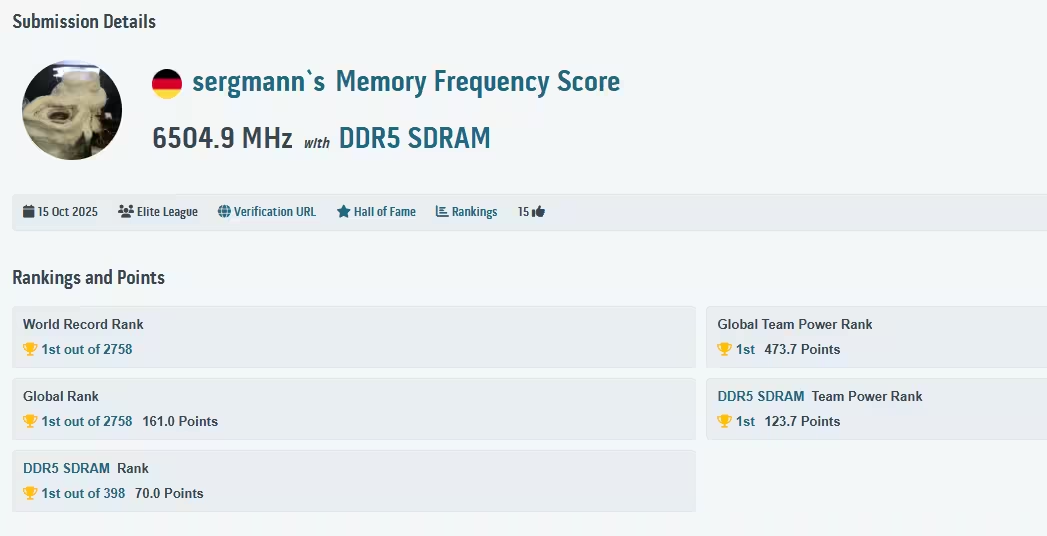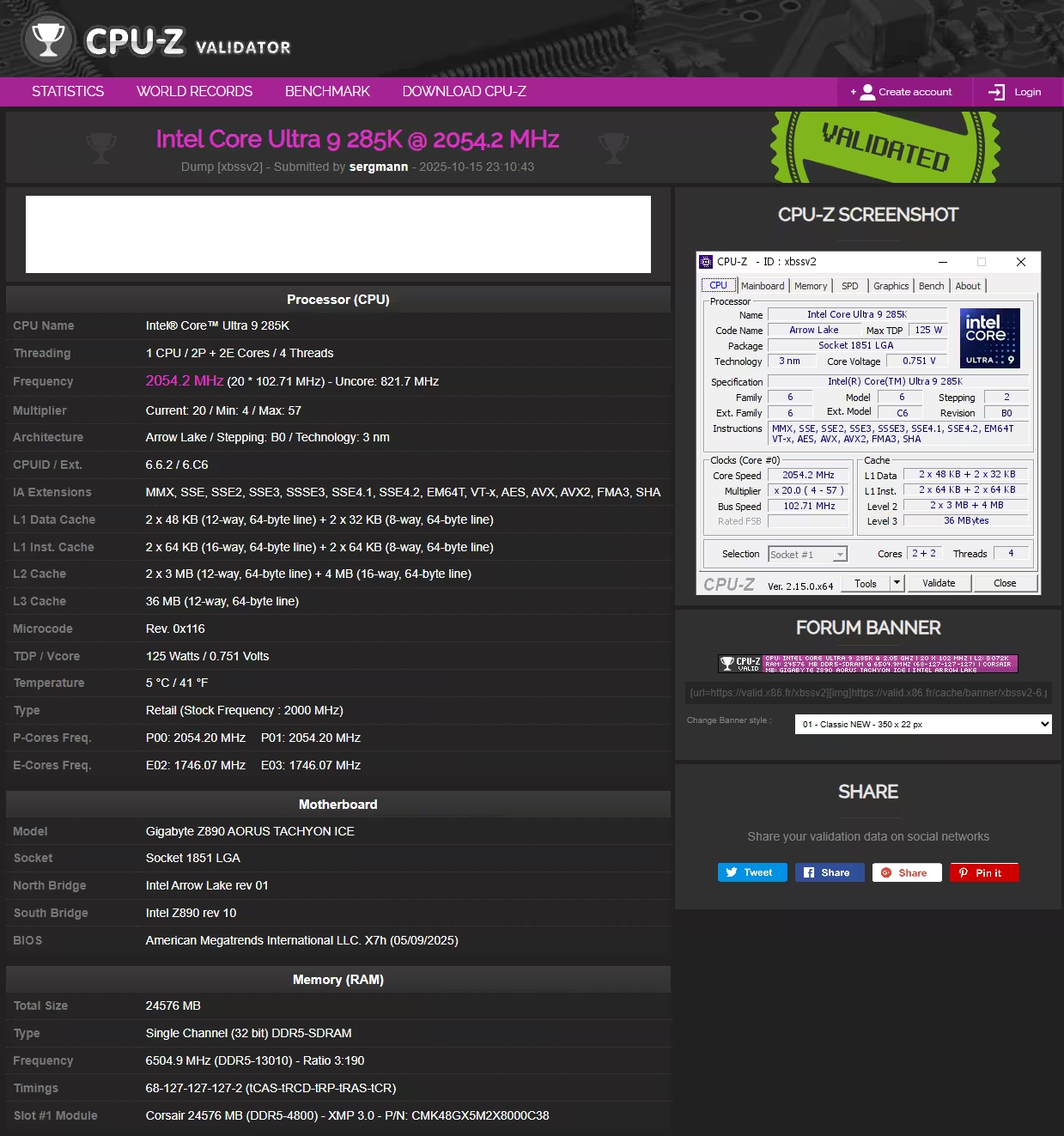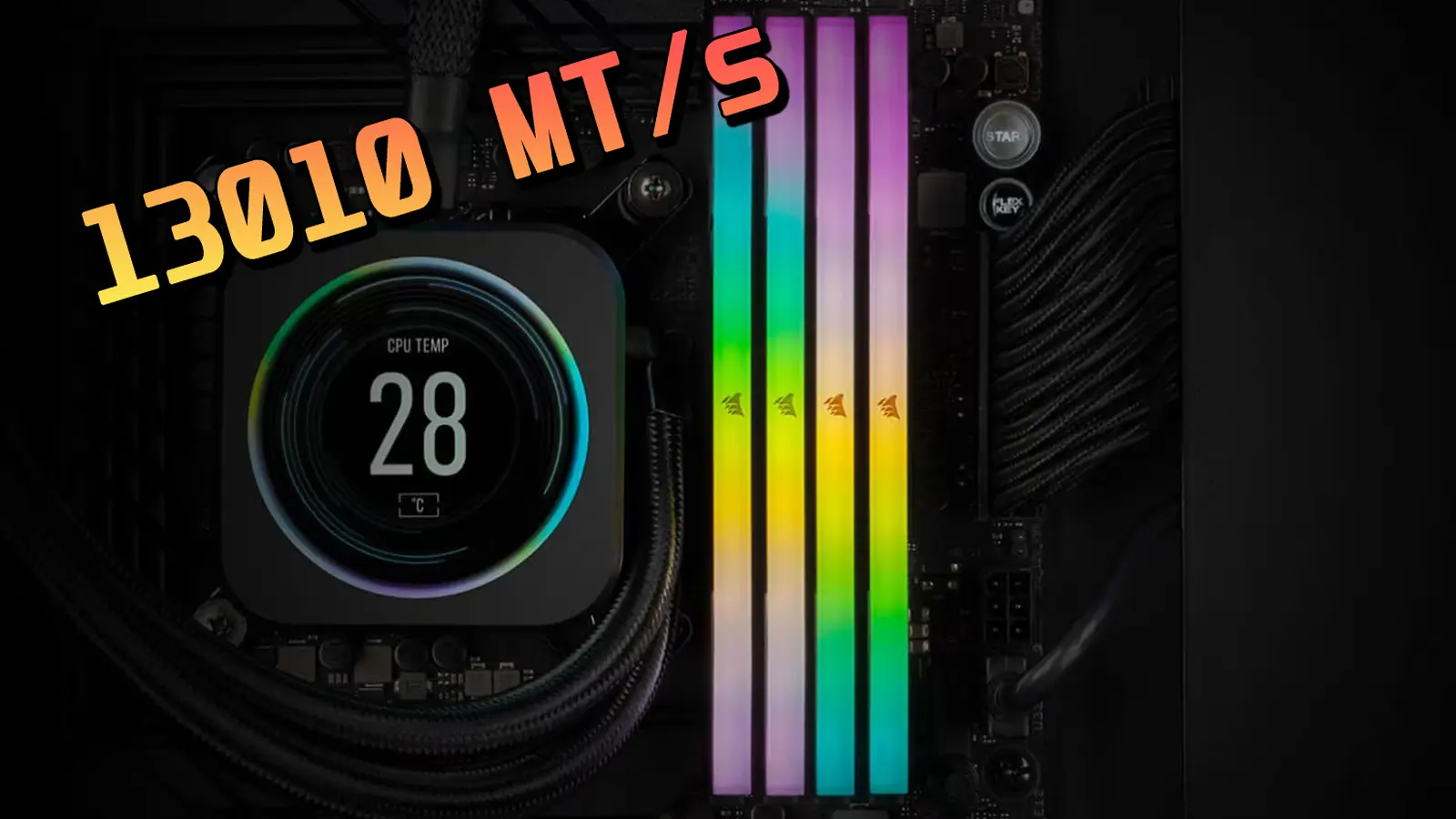3 Minutes
DDR5 memory has officially sprinted past 13,000 MT/s for the first time. German overclocker sergmann pushed a Corsair Vengeance kit to a verified 13,010 MT/s on a GIGABYTE Z890 Aorus Tachyon ICE, proving once again how far extreme tuning can take modern DRAM.
How the new DDR5 frequency record was set
The result, logged on HWBot and validated with CPU-Z, shows an effective data rate of 13,010 MT/s from a 6504.0 MHz real clock. This tops last month’s 12,920 MT/s run by popular overclocker saltycroissant, who had briefly and unofficially nudged past 13,000 MT/s before sergmann made it official.
Hardware and cooling behind the milestone
Details matter in extreme overclocking. Sergmann’s rig included a 24 GB Corsair Vengeance DDR5 module on a GIGABYTE Z890 Aorus Tachyon ICE motherboard, paired with an Intel Core Ultra 9 285K CPU. Liquid nitrogen cooling was used on both the processor and memory to reach stable operation at these extreme frequencies.
- Verified frequency: 6504.0 MHz (effective 13,010 MT/s)
- Timings: CL68-127-127-127-2
- IMC to memory clock ratio: 3:190
- Cooling: Liquid nitrogen (LN2)
Why this is a record rather than a practical upgrade
At first glance, a higher clock looks like pure performance good news. But the extreme timings used here tell a different story. The very loose latencies (CL68 and beyond) mean higher clock speeds don’t translate to better real-world responsiveness for everyday systems. In short, this is a leaderboard achievement more than a consumer performance breakthrough.

That said, the run is meaningful for the industry. Pushing clock boundaries exposes the limits of motherboard power delivery, memory controllers, and DRAM module stability. These experiments help vendors refine silicon and board design for future mainstream gains.
What tricked the clock — and what comes next?
Getting to 13,010 MT/s required micro-level tuning, premium PCB traces, and a robust IMC in the Core Ultra 200S family of chips. Sponsors and partners named by sergmann included GIGABYTE, MIFCOM, Corsair, Seasonic, and Thermal Grizzly — a reminder that world records are usually team efforts.
So where to from here? Moving from 13,000 to 14,000 MT/s will be exponentially harder than the leap from 12,000 to 13,000 MT/s. Still, overclocking communities thrive on those hard limits. Expect incremental gains, more validation runs, and a steady stream of tuning guides from enthusiasts chasing the next big milestone.

Why tech fans should care
Even if these figures won't change your everyday PC, they matter. Breakthroughs in extreme overclocking often presage improvements in mainstream stability, motherboard design, and even memory kit quality. Think of record runs as research & development performed in public — thrilling, extreme, and sometimes surprisingly useful.
Keep an eye on the overclocking scene. If history is any guide, today's record attempts will inform tomorrow's consumer hardware gains.
Source: wccftech


Leave a Comment